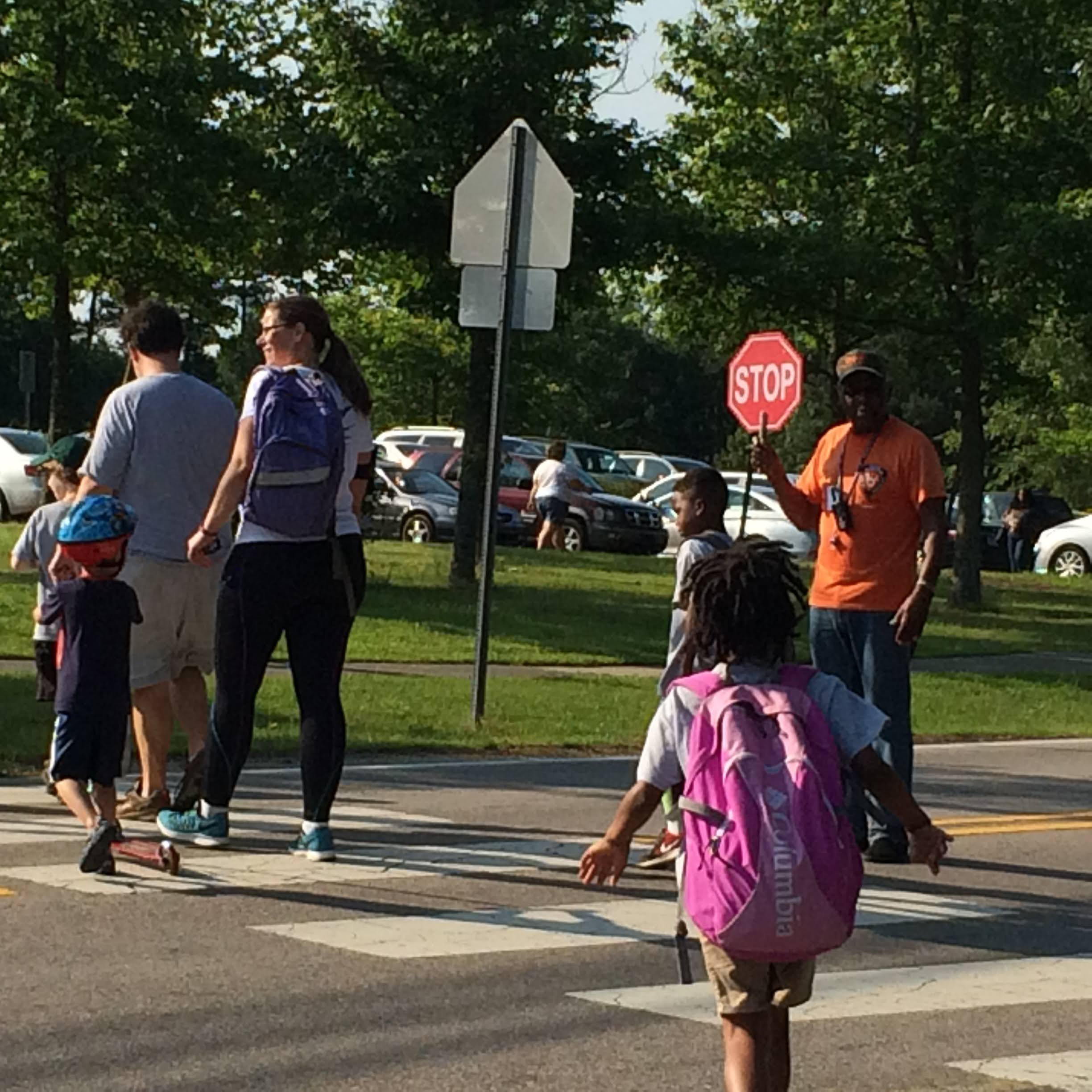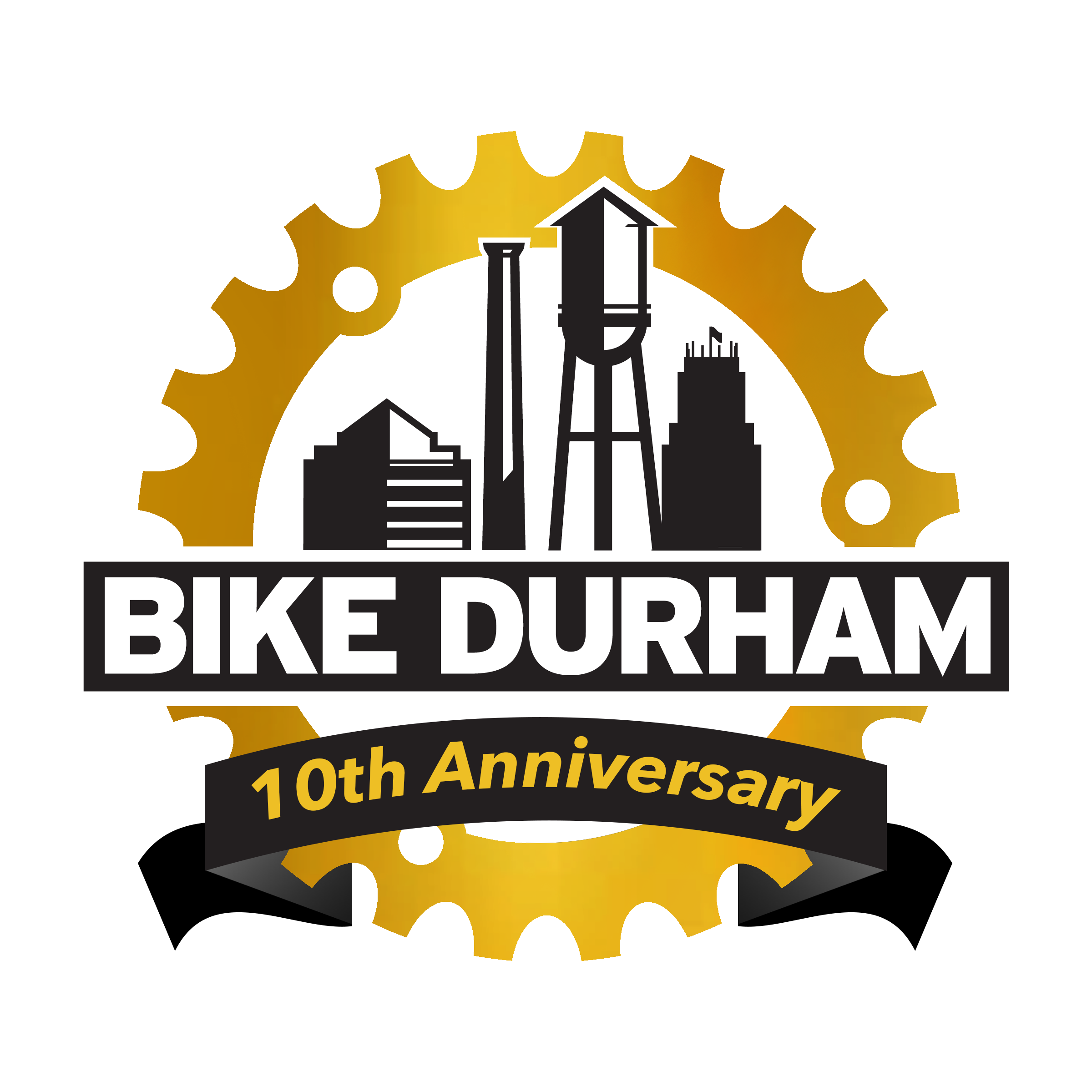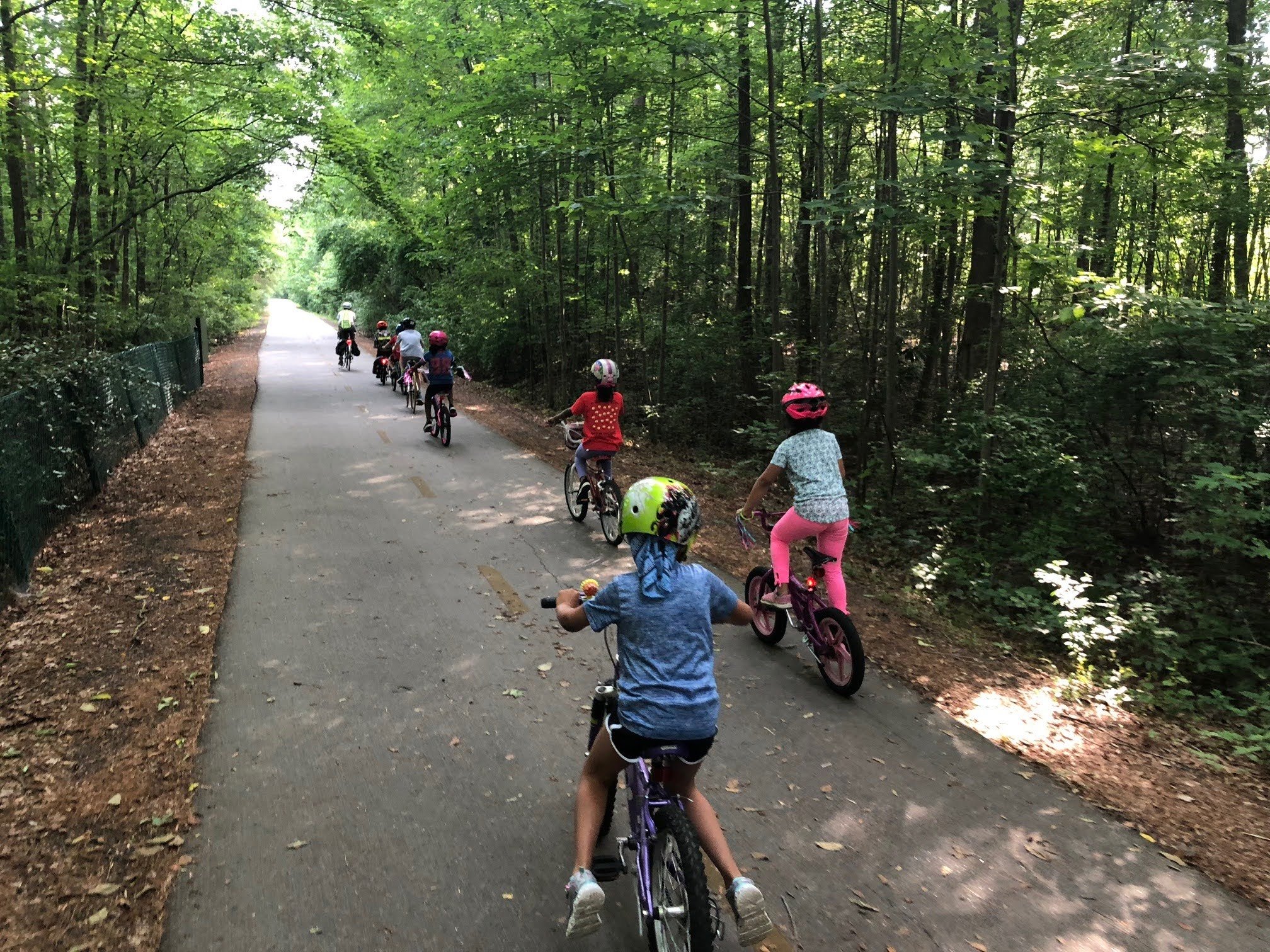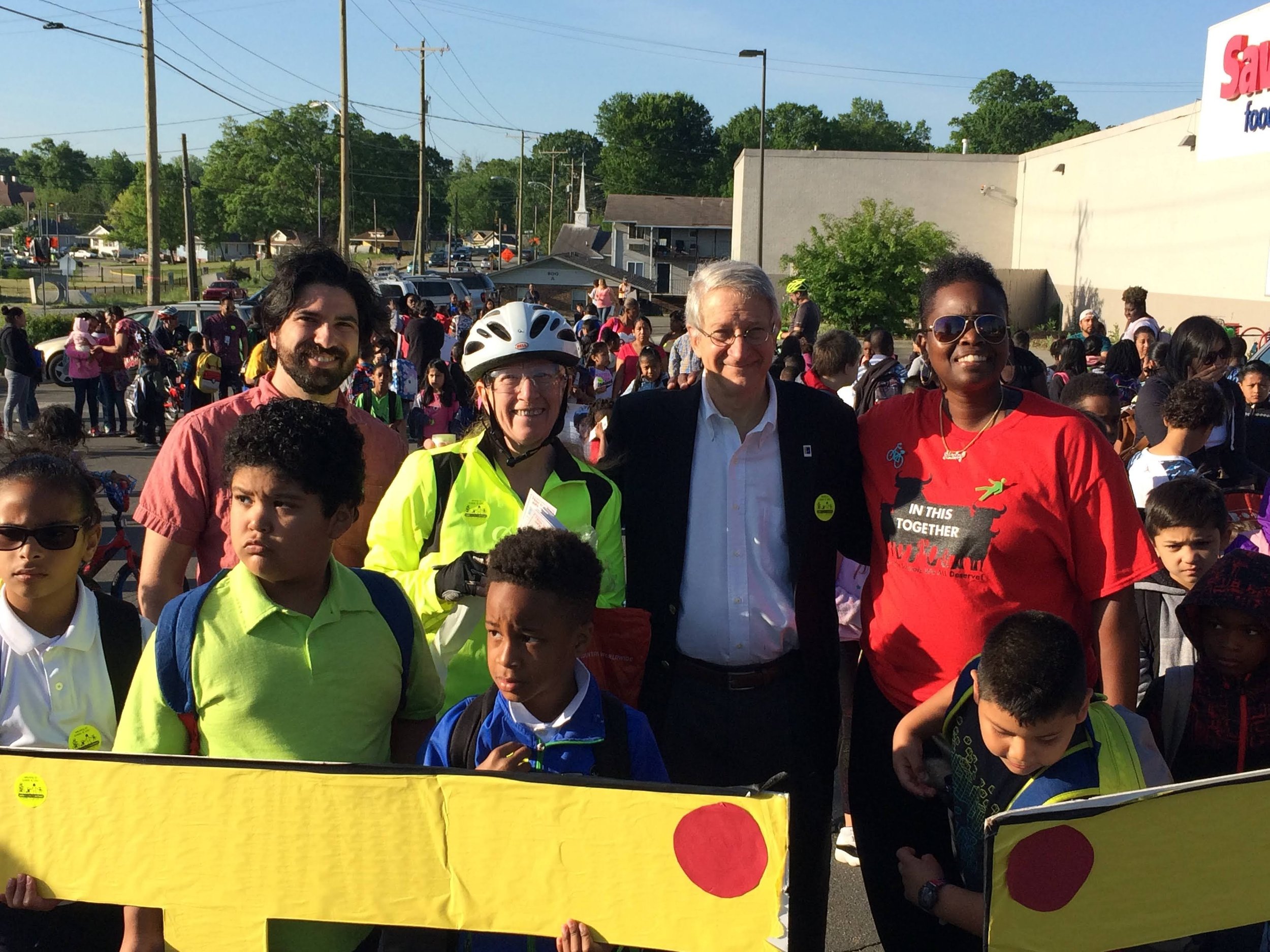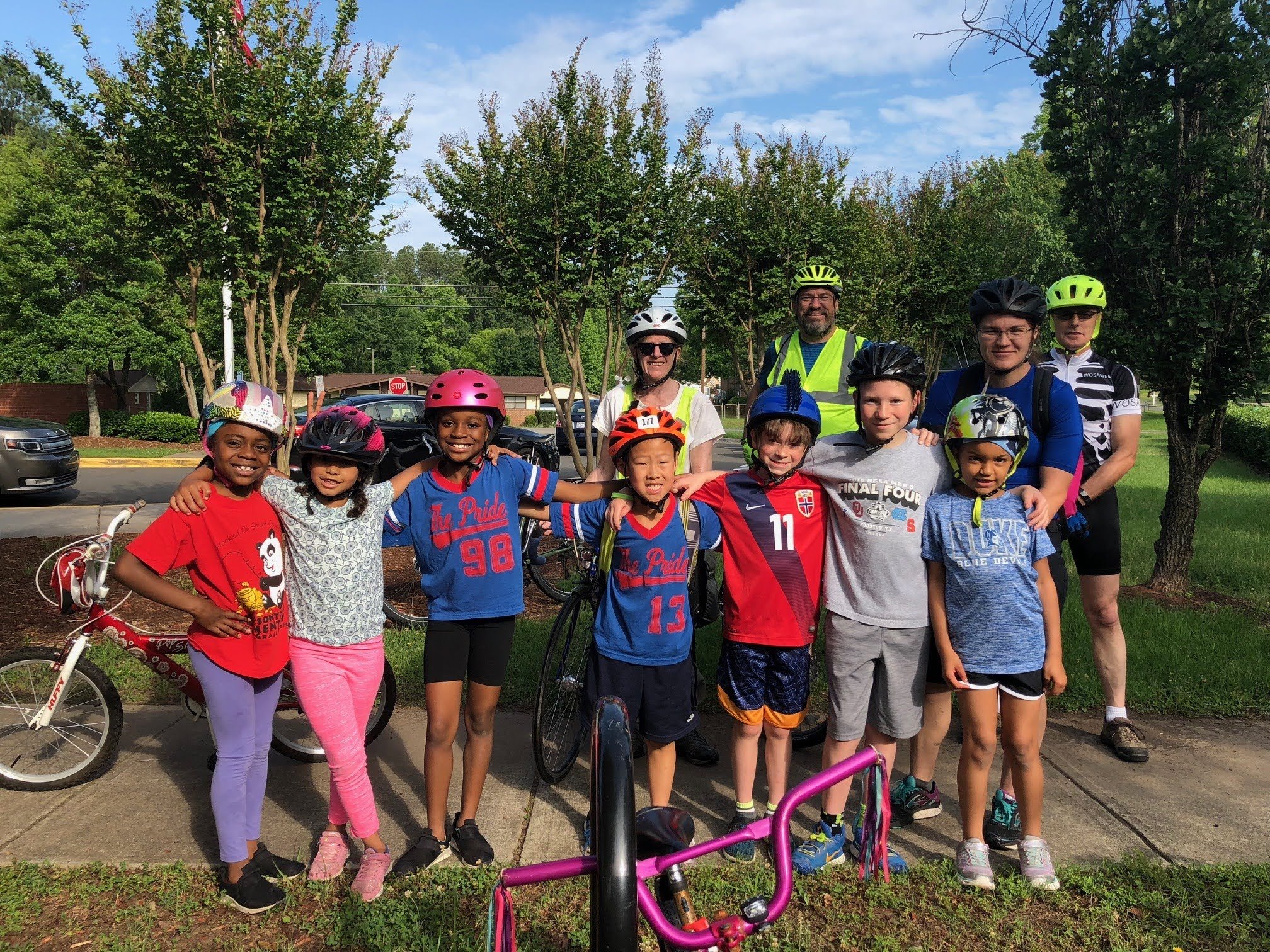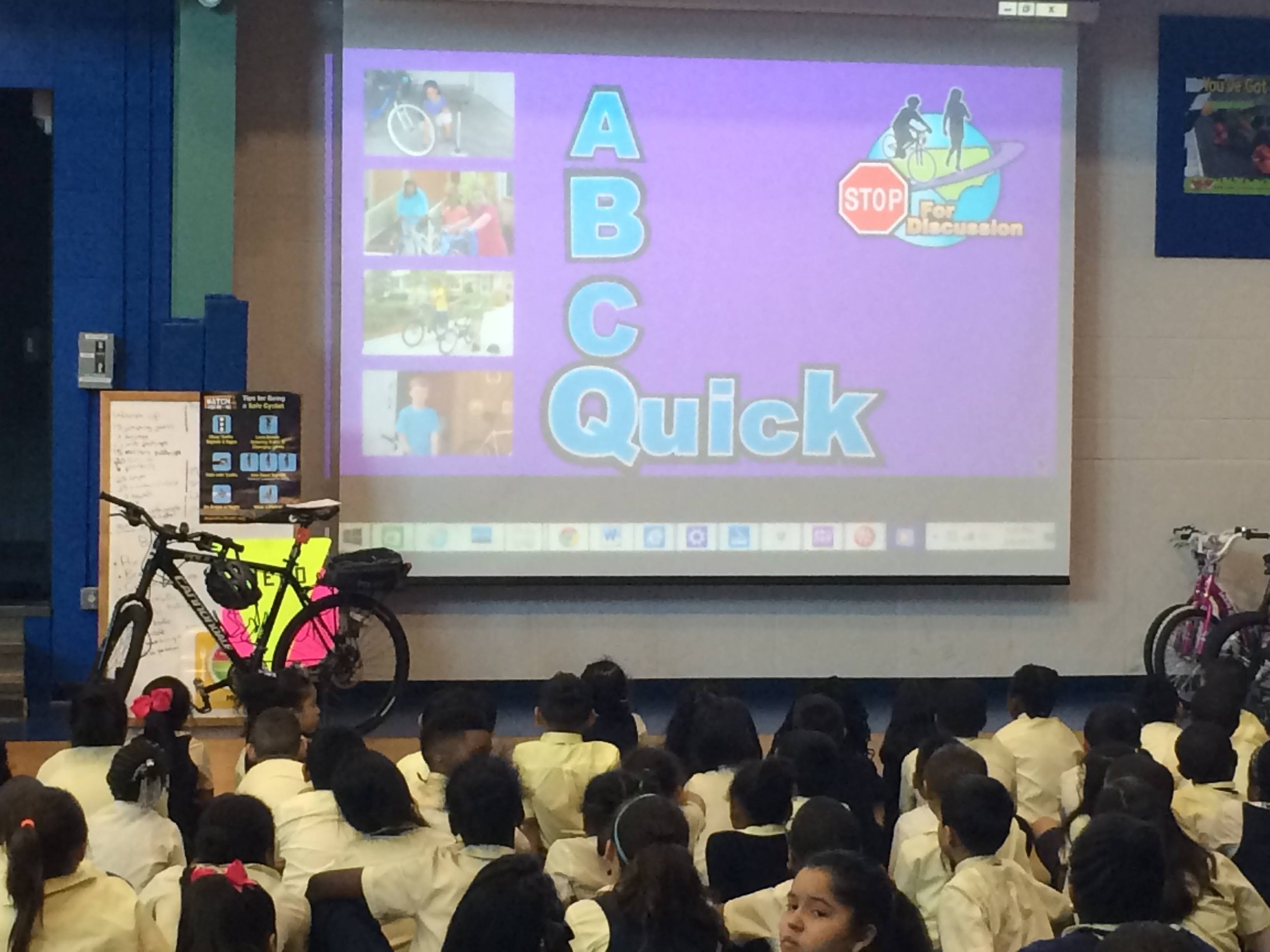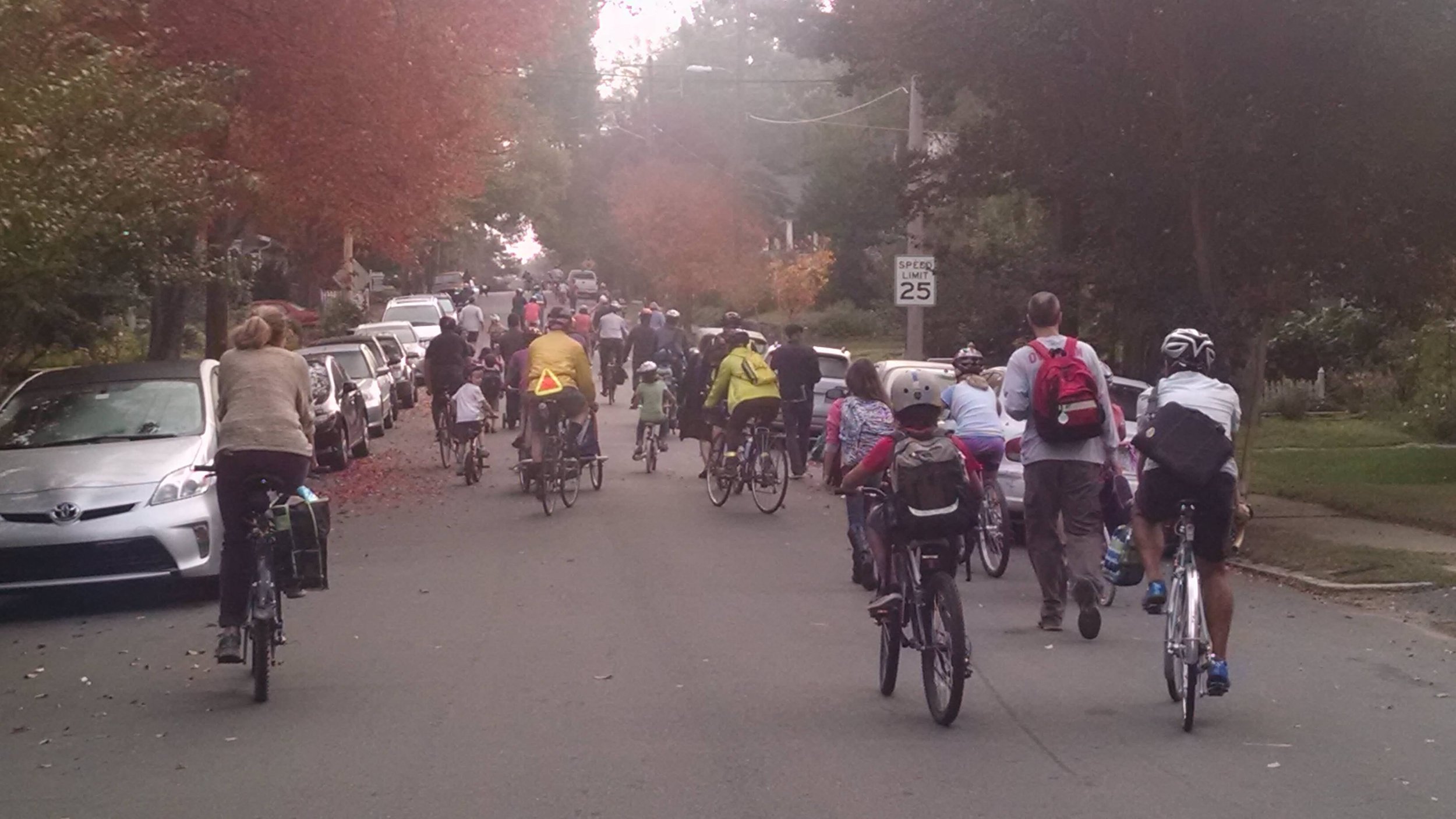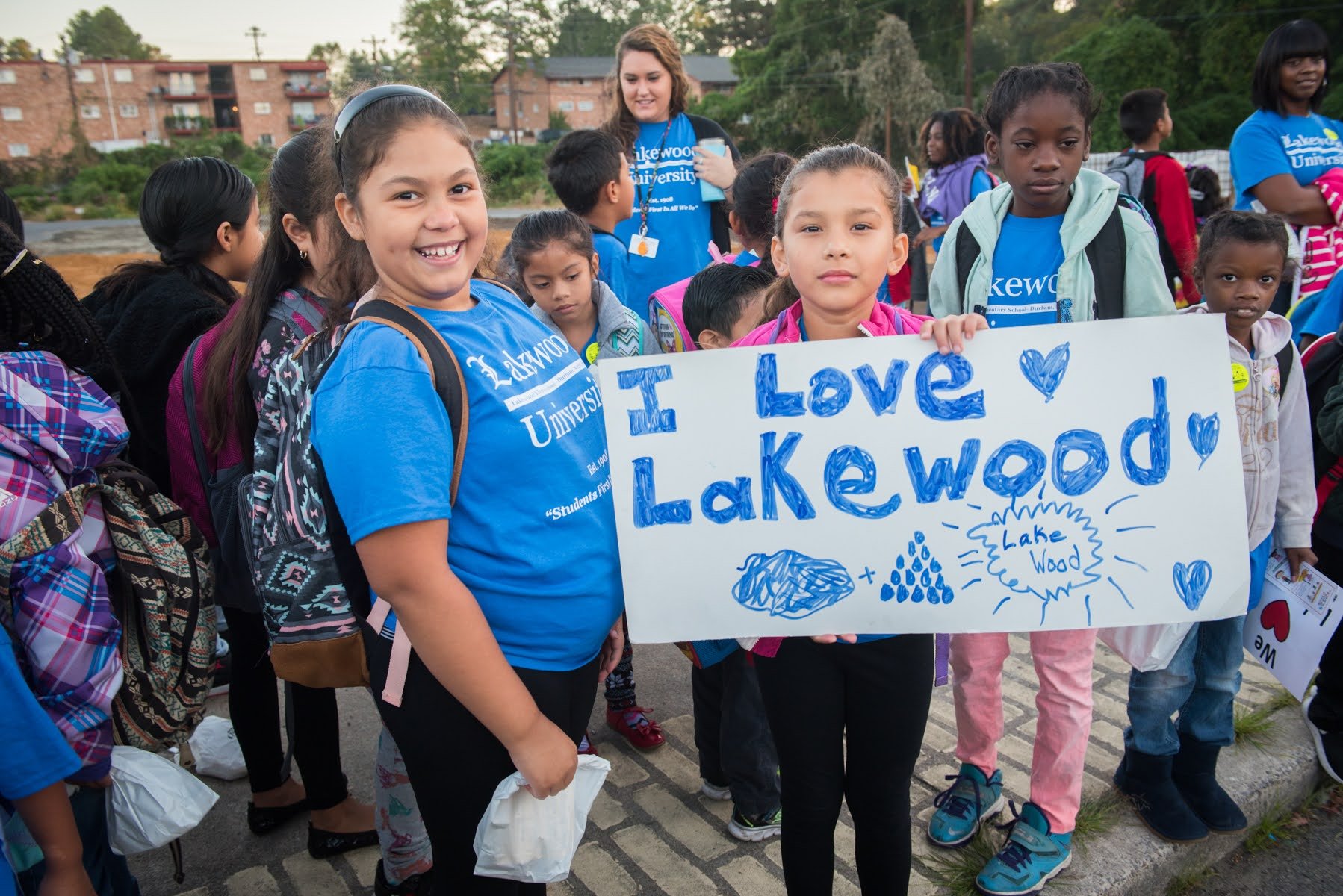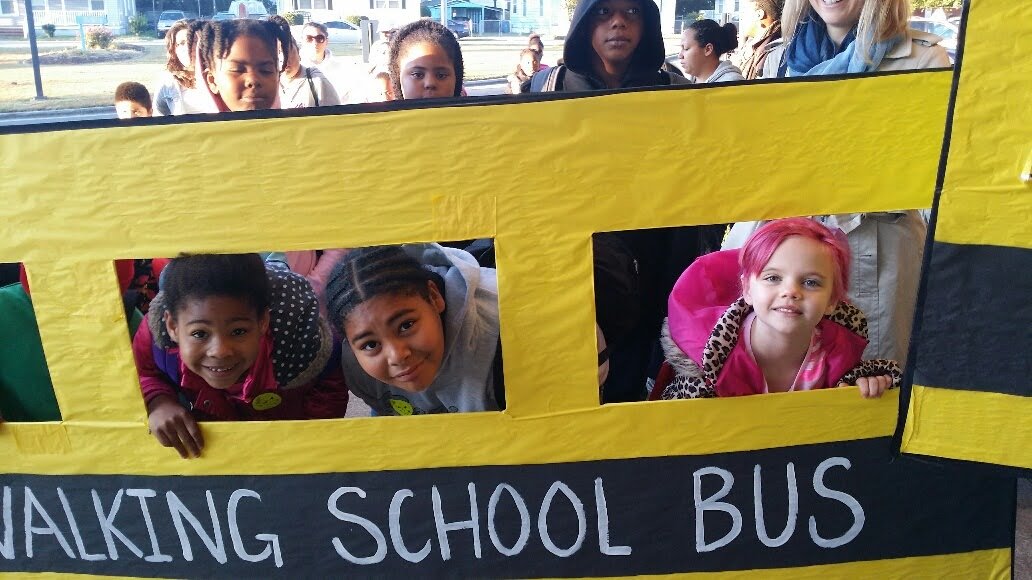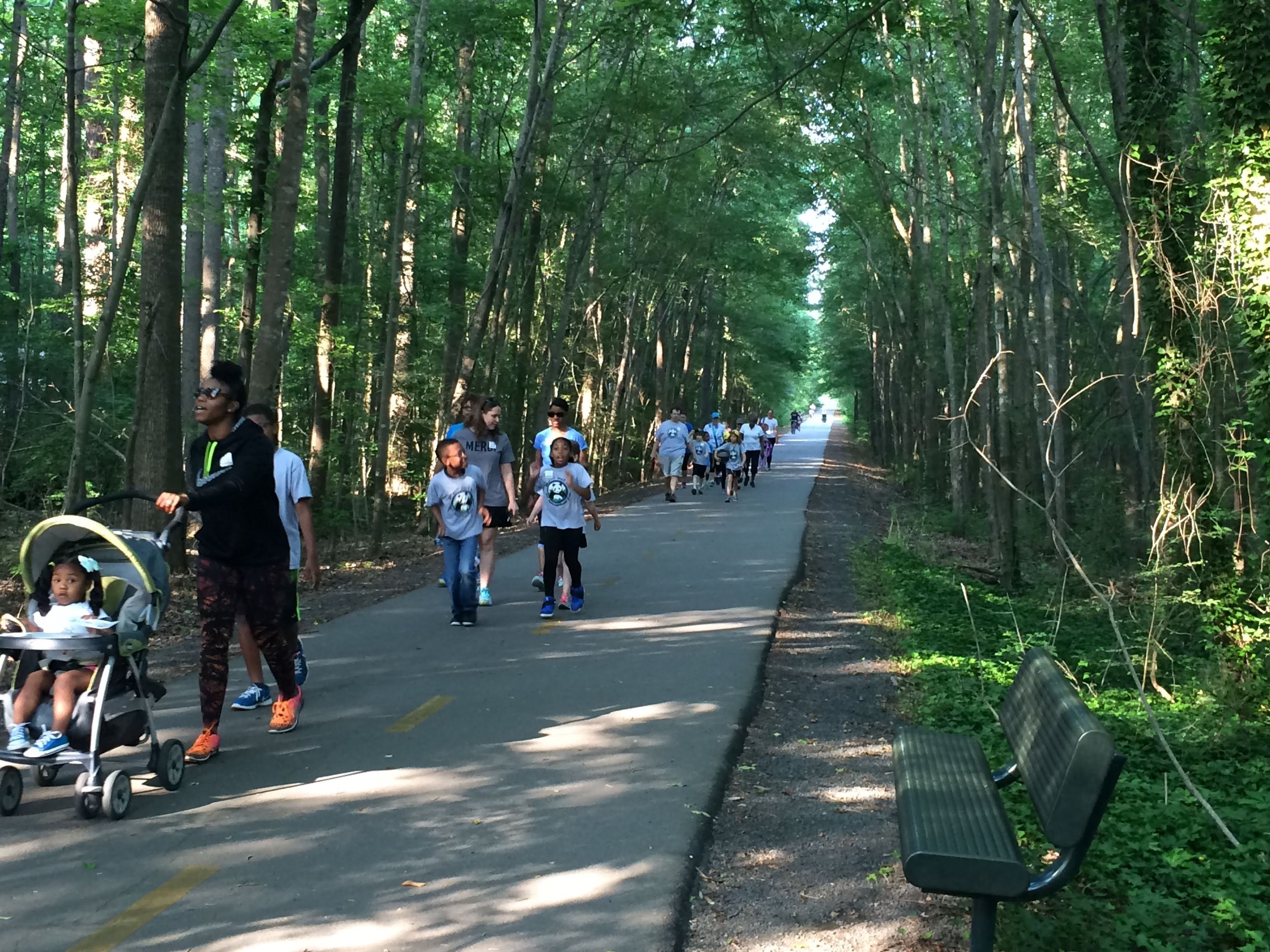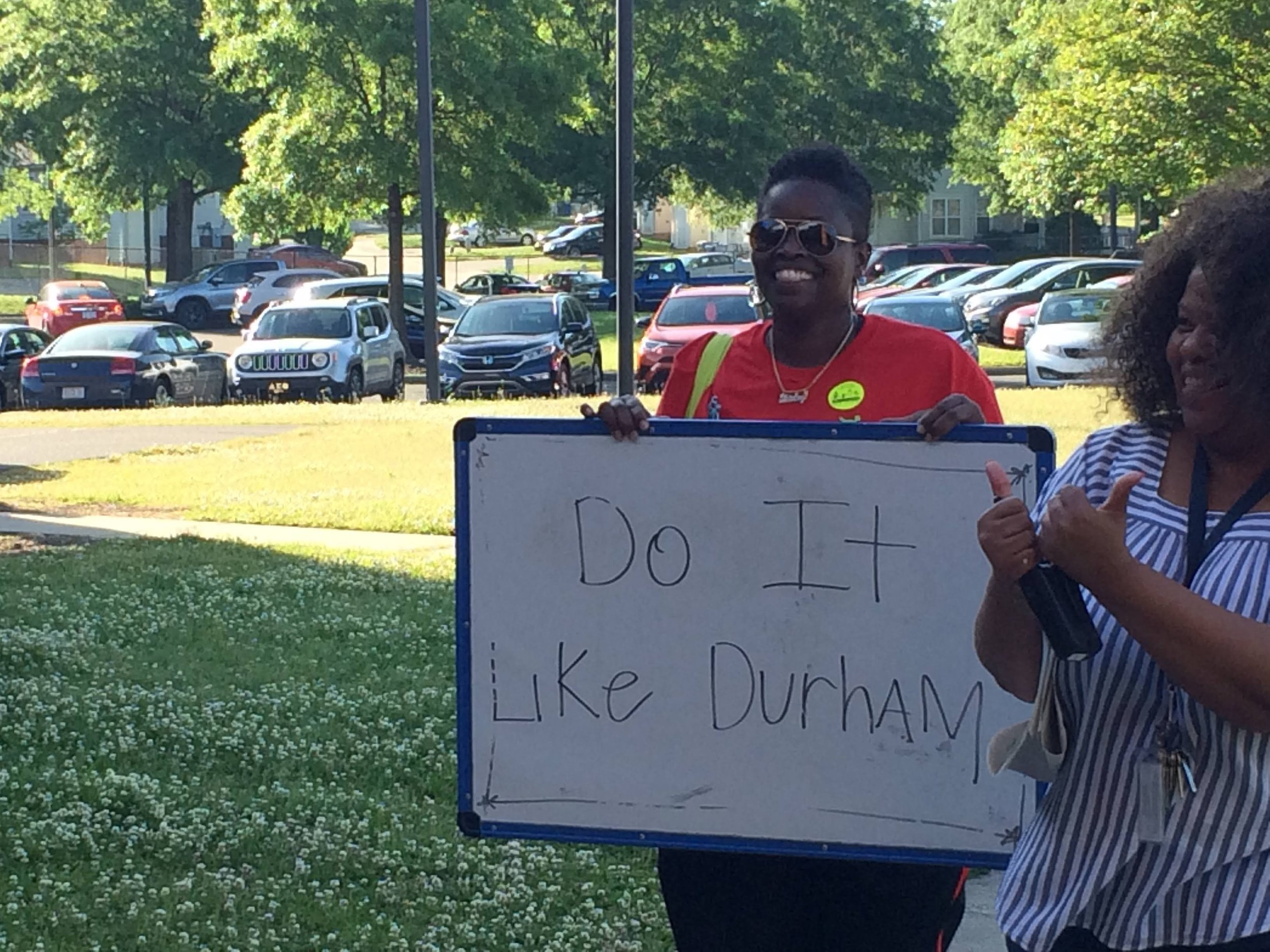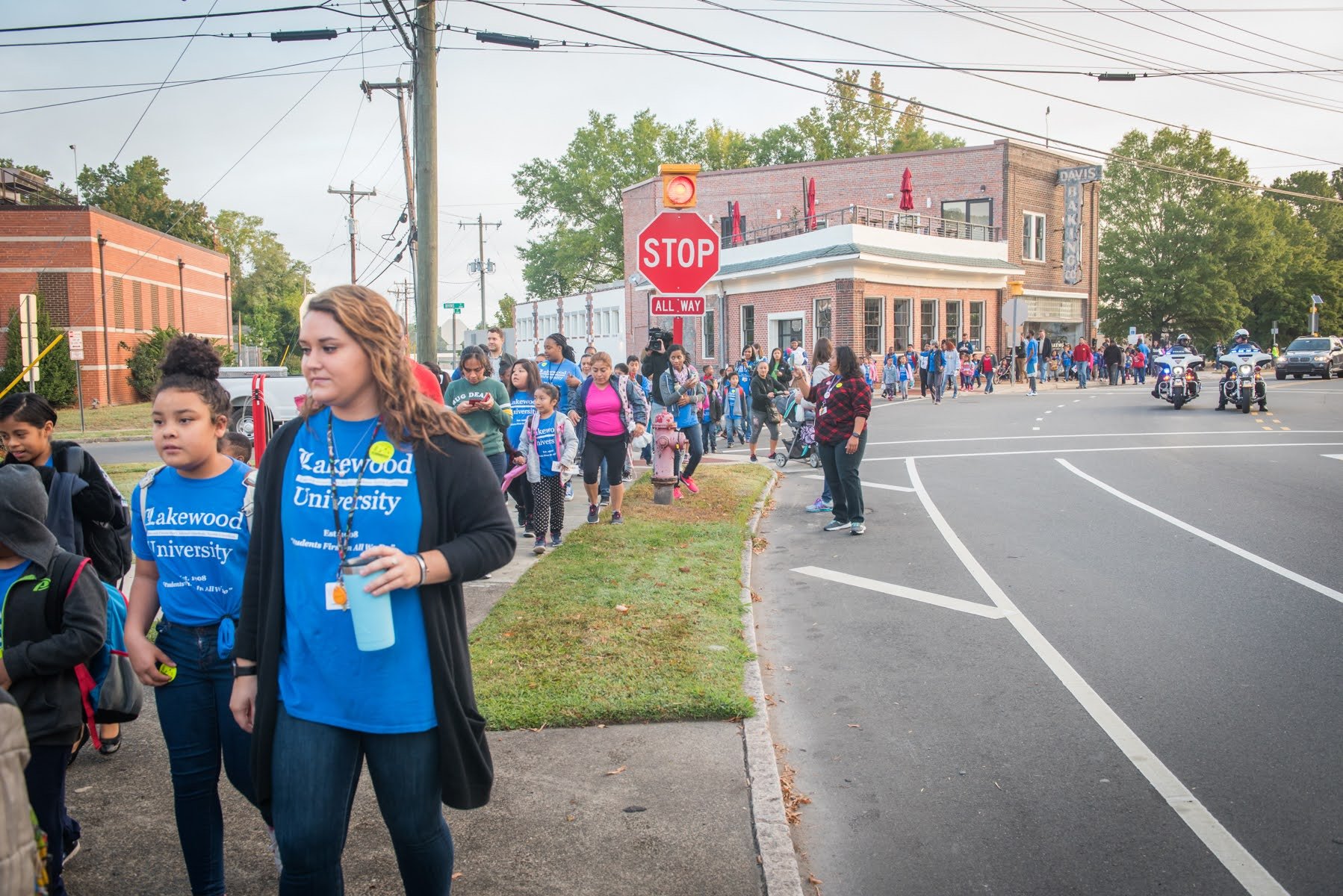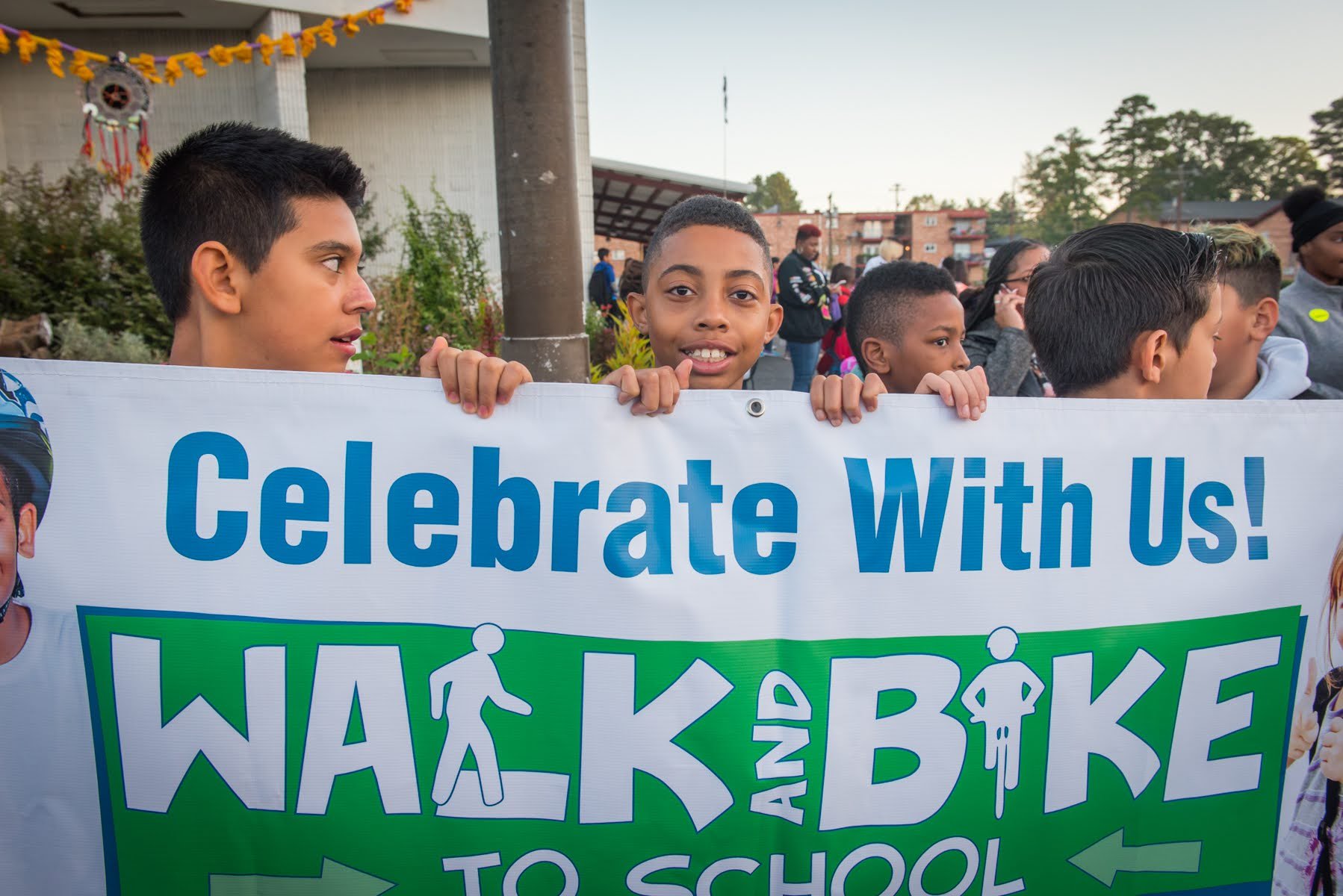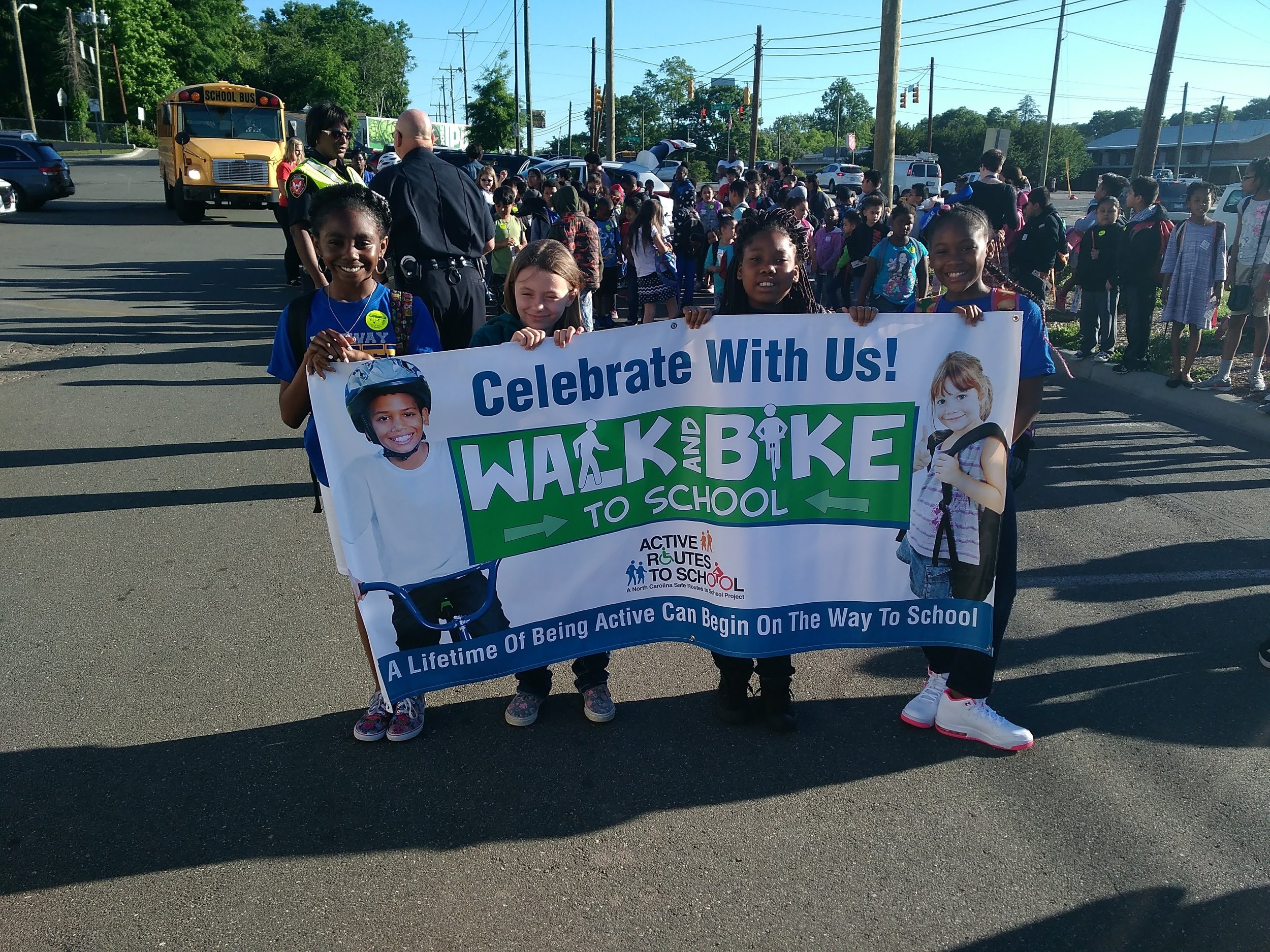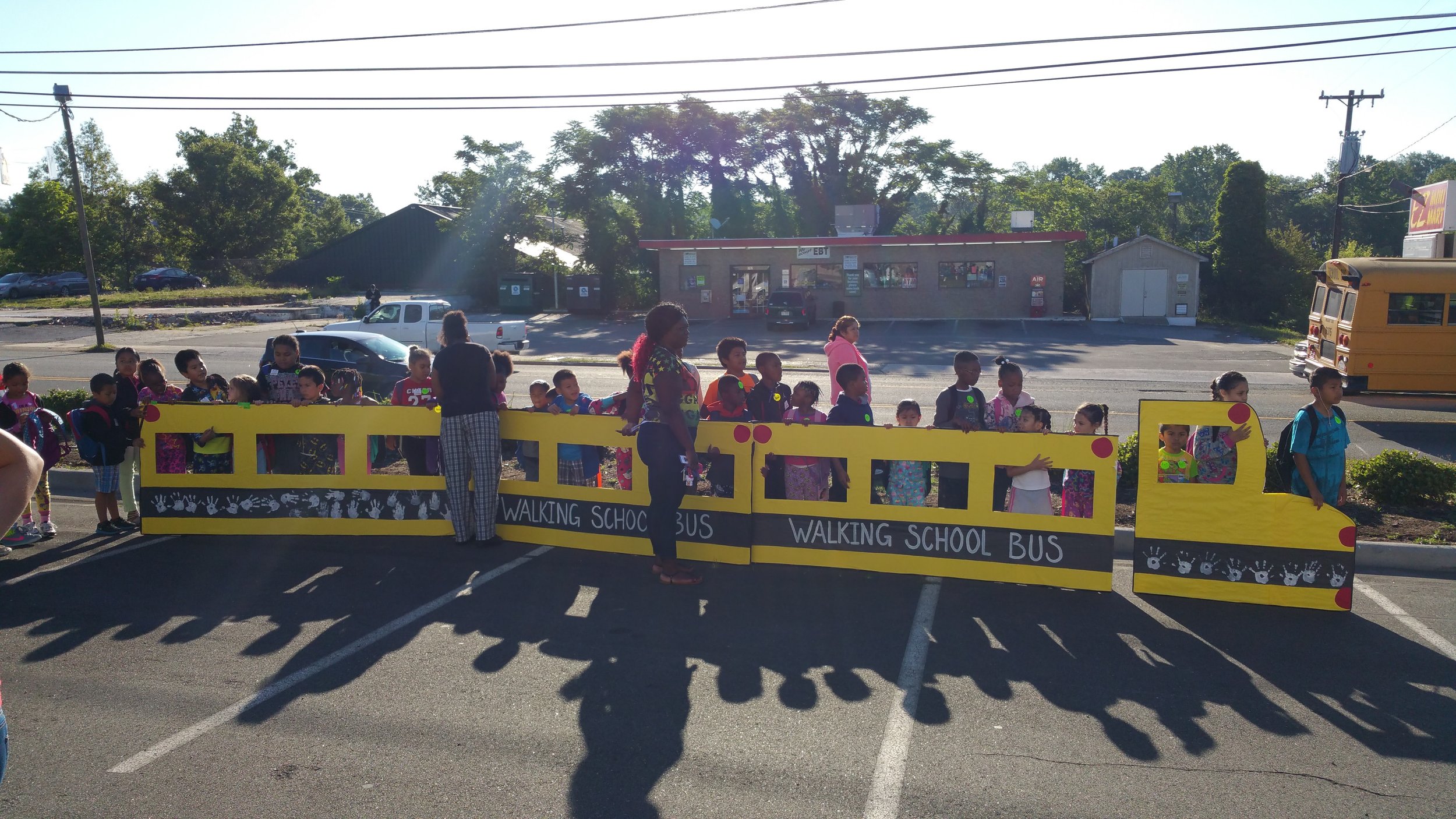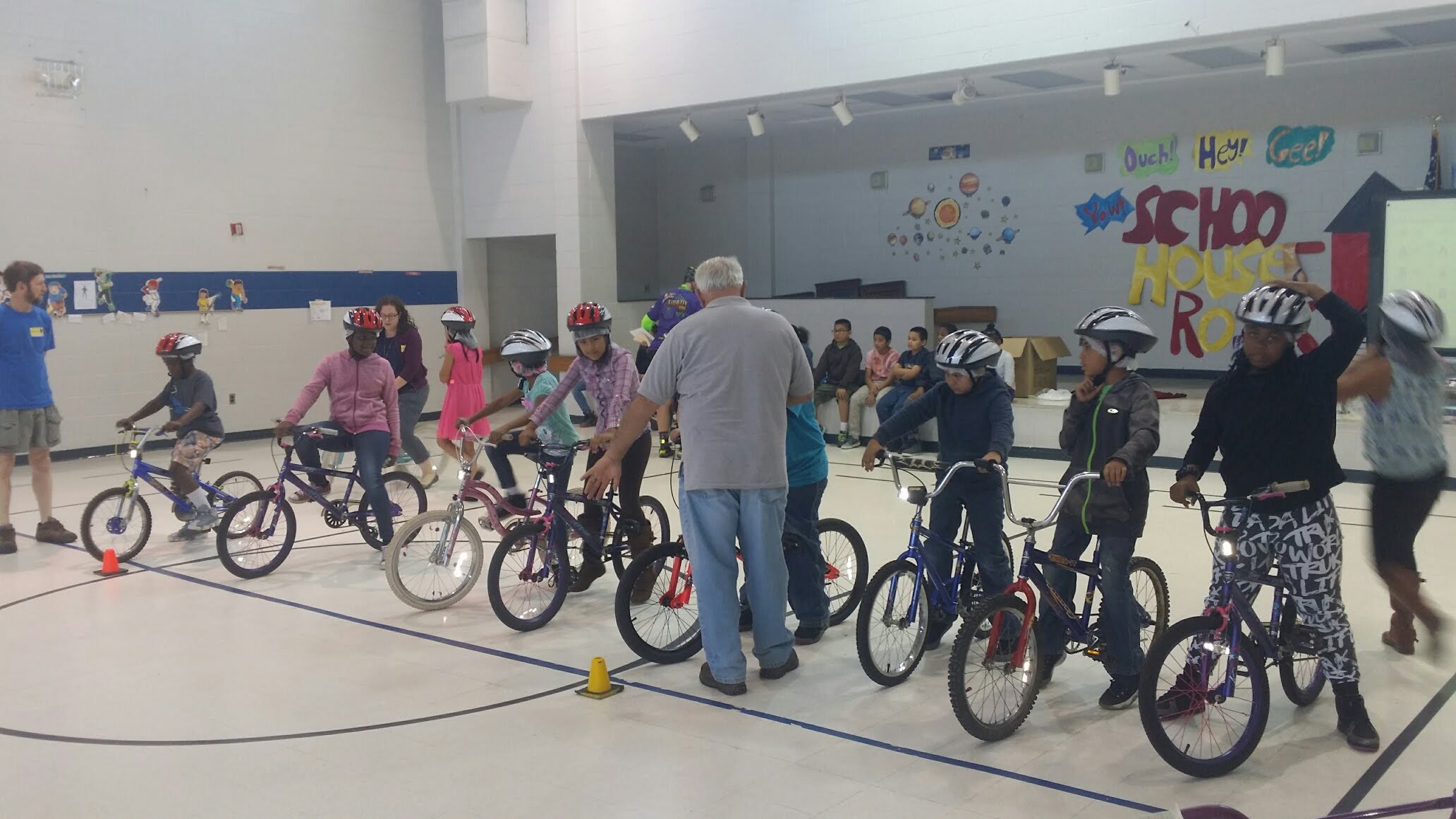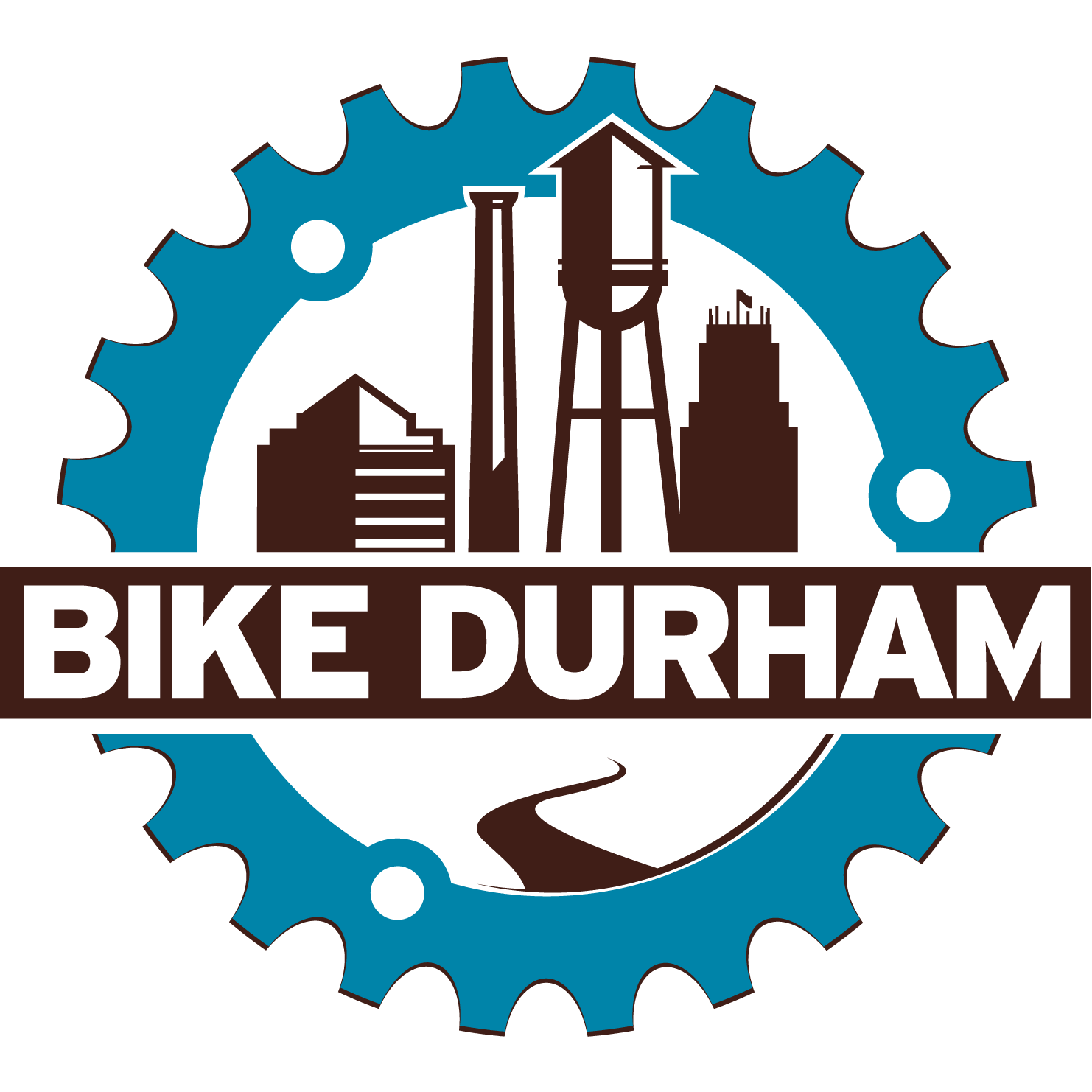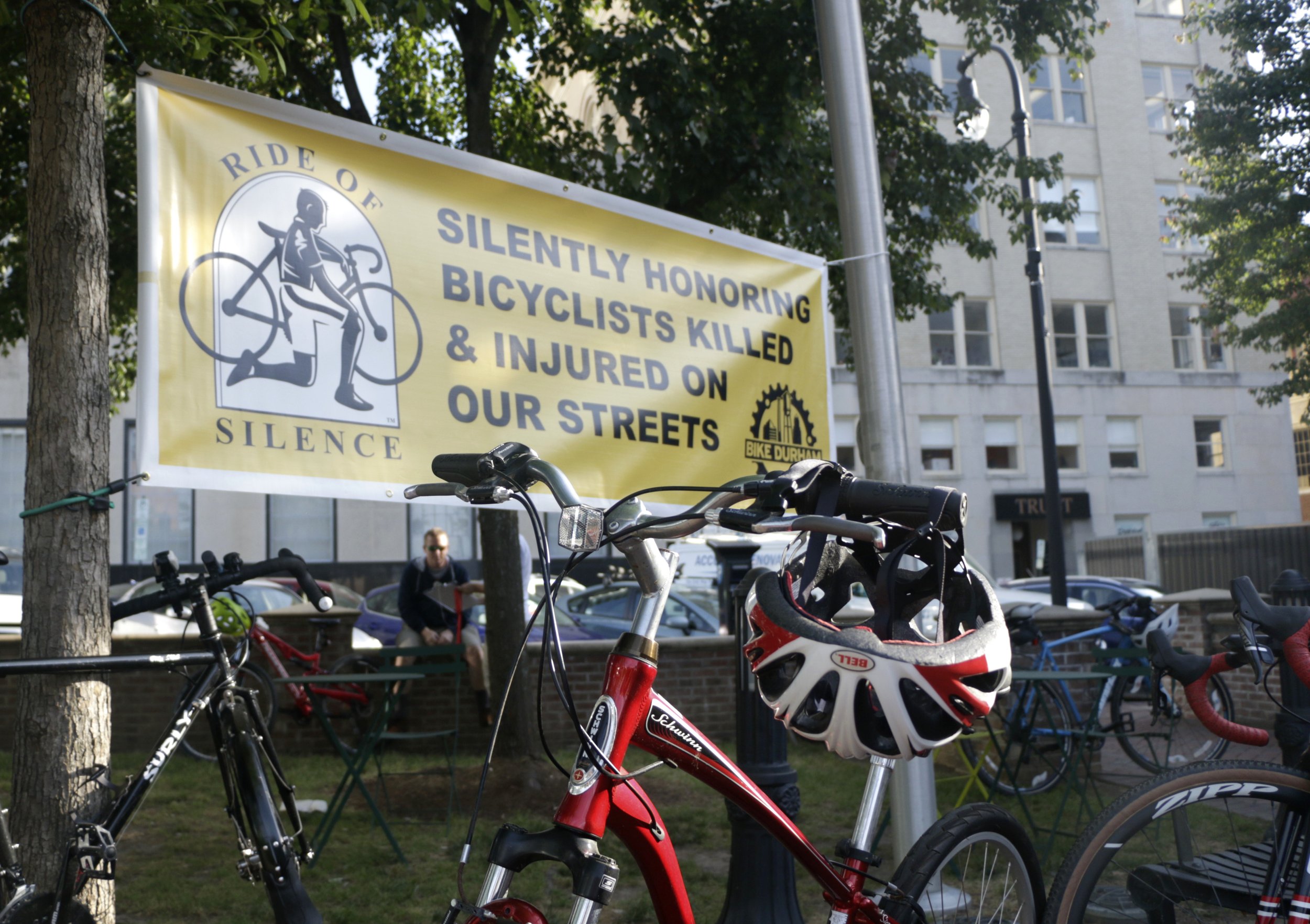‘They Just Made it Happen’
Durham’s Safe Routes to School program started humbly as an idea that Open Streets volunteers, Mark Dessauer and Jen McDuffie, wanted to see brought to Durham back in 2011. This has grown into an eagerly anticipated program, where Bike Durham staff touch the lives of thousands of elementary school students each year.
Jen McDuffie, a public health professional, former Durham resident, and former Bike Durham board member, had been intimately involved with the Safe Routes to School Program for ten years until she passed the torch to our organization in 2021.
John Rives, Mike Fink, Jen McDuffie, Frank Glover, Ellen Beckmann, and Dale McKeel (pictured Left to Right) at the Eastway Elementary Walk, Bike, & Roll to School Day event in 2014
Starting in 2015, McDuffie wrote grants to buy bicycles and pay helpers - Durham Bike Co-op faithfuls Mike Fink, Ralph Griesenbeck, John Rives, Tim Smith, and Gary Tencer - to teach the classes with her. In addition to the Co-op, she had connections with Durham Congregations, Associations, and Neighborhoods (CAN), the Partnership for a Healthy Durham, the East Durham Children’s Initiative, the Bicycle & Pedestrian Advisory Committee (BPAC), and at Durham Public Schools. All these partnerships played an instrumental role early on, setting the foundation and tone for Safe Routes to School in Durham.
“When Jen Mcduffie first started, she recruited a bunch of her friends and would put the bikes in the back of their pickup truck to move them around,” said Jennifer Delcourt. “It was an idea and they just made it happen.”
Coach Nisha Watson taking a selfie with students during the May 2015 Walk, Bike, & Roll to School Day event
Delcourt started working with the Safe Routes to School program as the regional school coordinator in 2014, covering nine counties including Durham. She started working with McDuffie trying to provide as much support as she could to the schools in Durham, such as printing flyers and introducing Safe Routes to Schools to many schools in Durham.
With one common goal in mind, they all came together to provide these programs and opportunities for students in Durham, despite the limited resources and challenges that they encountered.
At one of those schools, Eastway Elementary, they found a real partner in Nisha Watson, the P.E. teacher at the school. She has advocated for the program from the start. Although the idea of facilitating these activities for her students was intimidating, the support built in place made it easier for her to embrace this opportunity.
“They all put me at ease since the beginning,” Watson said. “Coming in with that partnership has been huge because I don’t think I would have been able to do it on my own.”
Keeping It Going
In 2019, McDuffie and Dale McKeel, the Bicycle-Pedestrian Coordinator for Durham, wrote a grant that was awarded by the state department of transportation to fund Safe Routes to School programming in Durham. Following delays due in part to the COVID-19 pandemic, in early 2021 the City sought proposals for a contractor to lead the Safe Routes to School program. McDuffie approached Bike Durham executive director John Tallmadge about a partnership, and together they were successful in winning the City contract. This established Bike Durham as the funded provider of Safe Routes to School programming, including bicycle safety training courses, and support for schools, parents, and students in holding Bike, Walk, & Roll to School day activities each May and October.
McDuffie planned to move from Durham to Vermont in Summer 2021, so Tallmadge knew they needed to keep it going by finding new staff to continue what McDuffie had started. Through the hiring process, Bike Durham was able to bring on both Jacopo Montobbio, a former bikepacking tour leader in Europe and New England, and Stephen Mullaney, a longtime classroom and outdoor educator working at Merrick-Moore Elementary, in part-time roles to carry on the program.
During that school year, with the fleet of bicycles that McDuffie had acquired in previous years, Montobbio, Mullaney, and volunteers Ruth Browne and Bes Baldwin were able to deliver bike safety classes at six schools. By May, nineteen schools participated in Bike, Walk, & Roll to School events.
Picking Up Momentum
The word was getting out to other schools in the Durham Public School system and more P.E. coaches were requesting classes than could be accommodated. Fortunately, Bike Durham had also been successful in telling the stories of the young students’ lives that were being touched by this program, and additional funding started coming in.
During the Summer of 2022, Bike Durham received gifts from an anonymous donor connected to a former board member and from Crum & Forster, employer of another former board member, enabling the organization to purchase a second fleet of bikes for the third and fourth grade classes, and a fleet of balance bikes to start a kindergarten level class at Merrick-Moore Elementary.
During Fall of 2022, the Pedals to Possibilities fundraiser brought in additional money to pay more educators to teach the classes to more grade levels at more schools. That school year, more than 1,200 students at twelve schools participated in bike safety classes. More than 15,000 students participated in Bike, Walk, & Roll to School events.
Bike Durham also learned in Spring 2023 that funding would continue for at least the next two years through a County-directed federal grant and the next round of Safe Routes to School funding from North Carolina Department of Transportation.
“Once you give seed money, it is up to the people who receive it to keep it going and get it permanently funded,” McDuffie said. “We’ve done that and it’s beautiful.”
‘They’re Going to Be Advocates One Day’
Students with bikes and scooters celebrating their arrivial at Lakewood Elementary during the 2017 Walk, Bike, & Roll to School event.
Starting with kids getting to and from school is starting with the foundational and basic trip that every individual has taken throughout their childhood and educational career. According to Montobbio, our Education Program Manager, Safe Routes to School is about putting policies, physical infrastructure, and programs in place to enable families to choose to walk and bike to school, as well as other places, safely.
The education program has been successful because so many kids love the feelings of accomplishment that comes from learning new skills, and they love feeling their bodies move around outside. Momentum has built as Safe Routes to School becomes more prominent within the schools it works in. Students and parents are now expecting bicycle safety classes and activities year after year. But Safe Routes to School is intended to have a deeper impact than just teaching kids how to ride a bike. It teaches the benefits of having safe and accessible transportation and also teaches students to be advocates for themselves and their community.
“They're going to be advocates one day like they're advocating now for themselves to have more of these classes,” said Coach Watson of Eastway Elementary.
Over the years, the Safe Routes to School Program has been a strengthening partnership with the City of Durham, Durham County, and the Durham Public Schools district. All have shared goals of making it safe and attractive for more families to choose walking, biking, and rolling to school. Kristen Brookshire, the community transportation planner for DPS, believes that advocating for Safe Routes to School isn't just benefiting the students, but the community in Durham as a whole.
“If we’re making it better for kids, it’s going to be better for everyone,” said Brookshire. “It’s going to be better for the parent with a stroller. It’s going to be better for the grandfather with a cane. It’s going to be better for the person trying to get to work.”
*According to the U.S. Department of Transportation, Safe Routes to School is an approach that promotes walking and biking through infrastructure improvements, safety education, incentives, and many more methods to work towards the overall goal.






